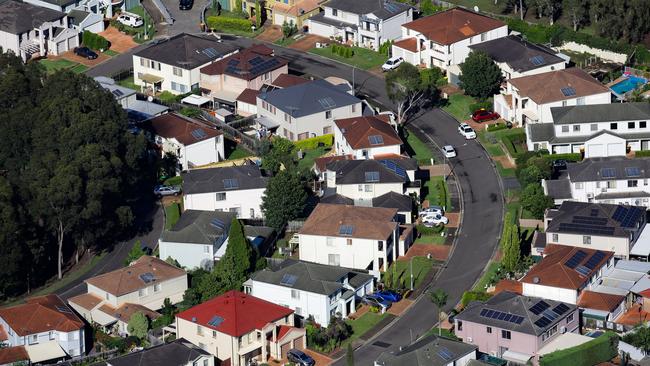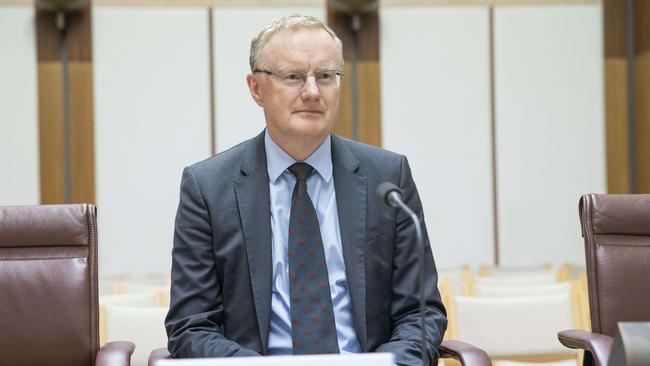RBA warns of coming consumer crunch as interest rate rises bite
In a series of RBA documents released under Freedom of Information laws, the central bank lays bare its thinking about the expected fallout from eight interest rate rises.
Almost two in three borrowers are expected to slash non-essential spending in response to a run of interest rate rises, as the Reserve Bank warns almost 6 per cent of borrowers will be unable to meet ballooning mortgage payments.
In a series of documents released by the RBA under Freedom of Information laws, the bank has laid bare its thinking about the effect of a string of rate rises that have left borrowers reeling, questioning whether they will have the desired impact.
An email exchange in October shows several senior RBA figures discussing household responses to rate rises.
“Many households will be able to manage reductions in their spare cash flows (their income after meeting loan repayments and essential living expenses) by reducing their non-essential spending and/or their rate of saving,” one RBA figure noted.
“However, a small share of borrowers with lower savings and high debt will need to draw down on – and could ultimately deplete – their accumulated payment buffers and could therefore encounter mortgage payment difficulties.”
An RBA report shows 30 per cent of borrowers on variable rate loans will deplete their savings buffer within 12 months if rates rise to 300 basis points above the April 2022 level.

The stark forecast comes as CoreLogic warns many home buyers who borrowed during the pandemic may be approaching the top of their serviceability buffers.
The Australian Prudential Regulation Authority upped the serviceability buffers to 3 per cent above the loan rate in October 2021.
“These buffers were intended to ensure a borrower would meet their debt obligation amid rising interest rates, while also minimising potentially risky lending,” CoreLogic’s end-of-year report says.
“With the cash rate now at its highest level since November 2012, recent borrowers may be entering an untested environment regarding their loan serviceability, a situation made harder due to persistently high non-discretionary inflation.”
The RBA’s report finds 6 per cent of borrowers were highly vulnerable and were likely to fully deplete their buffer within six months, even if they cut non-essential spending by 90 per cent.
This may lead to some being forced to sell as they are unable to meet elevated mortgage demands.
However, the bank finds 71 per cent of borrowers are not vulnerable and have a large stock of savings to absorb extra costs for at least two years.
But the bank notes many are likely to reduce their consumption by up to 10 per cent.
The documents show the RBA expects the string of rate rises to crunch consumer spending from some households, but wealthier and older Australians with cash savings may lift their spending thanks to higher yields on savings.
The documents, which detail the distributive impact of cash rate rises, question whether the latest string of rate rises aimed at heading off inflation stoked by a combination of consumer demand and supply shortages will work as well as the last time the RBA jacked up rates.
Members of the RBA’s Economic Group questioned the assumptions in an August report that was prepared with assistance from the deputy head of the economic analysis department, Tom Rosewall.
The authors noted the higher gross debt and asset stock positions of the household sector raised uncertainty about how they will respond to the interest rate shocks that lay ahead.
“In particular, if more households become liquidity-constrained than in the past, this would result in a larger-than-expected reduction in consumption in response to rising interest rates,” the report notes.
“The coincidence of rising interest rates and higher inflation may generate a larger-than-usual consumption response, depending on which groups of households are most affected and differences in marginal propensities to consume (MPC) across the income distribution.”
The cash rate has soared in recent months from a low of 0.1 per cent since the RBA slashed rates in November 2020, hitting 3.1 per cent in December.

This takes rates to their highest since November 2012, with many commentators expecting the RBA to continue to ratchet up rates in response to stubborn inflation.
The RBA report authors note existing analysis assumes the cash rate could hit 4.71 per cent.
Consumer price inflation across all groups printed at 7.3 per cent in the latest quarter according to the Australian Bureau of Statistics, up 1.8 per cent on the previous quarter.
Centre for Independent Studies chief economist Peter Tulip said the impact of the cash rate on household cash flow was greatly exaggerated, but falling house prices put a further clamp on spending.
“Other channels of monetary policy are substantially more important.
“In particular, effects on consumption via house prices and other wealth; direct effects on dwelling construction; the effect of the exchange rate on net export volumes,” he said.
Mr Tulip said the RBA’s household net wealth data showed the last few years had seen a huge run-up in housing wealth, which was set to tumble as the cash rate lifted.
“There’s a nominal reduction in household prices but remember this is all happening alongside high inflation,” he said.
“House prices are dropping while the price of everything else is going up pretty substantially.”
The latest data from CoreLogic shows house prices were down 3.2 per cent to November and 5.2 per cent across the capital cities.
Mr Tulip said this decline in wealth would trigger a pullback in consumer spending, particularly on white goods and cars.
“When house prices were rising a few years ago, people were buying a lot of cars and fridges and overseas travel,” he said.
“We’ll be seeing less of that in the downturn.”







To join the conversation, please log in. Don't have an account? Register
Join the conversation, you are commenting as Logout